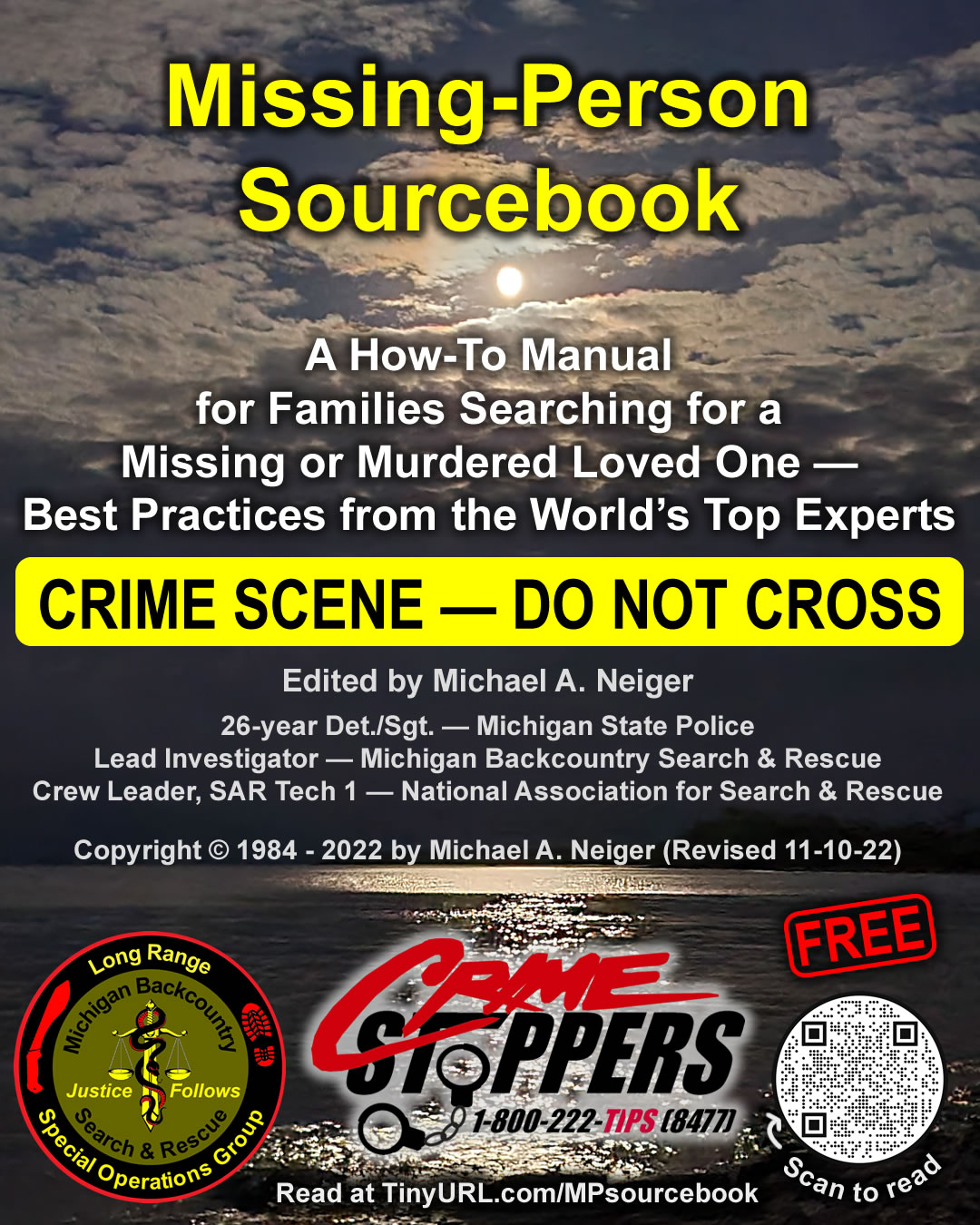
You're here: MibSAR :: M-P Sourcebook Table of Contents :: Books
Free
Missing-Person
Books and Resources
| << Prior Chapter | Next Chapter >> |
These free books and resources may be useful for families with a missing loved one.
Note: Additional, free, topic-specific books for families with missing loved ones are also listed elsewhere on this website:
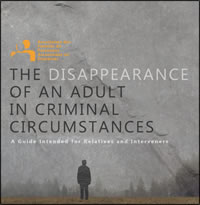 |
|
| The Disappearance of an Adult in Criminal Circumstances: A Guide Intended for Relatives and Interveners, by Justine Razafindramboa | |
This guide is intended to support the relatives of adults who have disappeared because of criminal circumstances, to better inform them of the steps to be taken, and to raise public awareness of this issue.
Contents:
- The phenomenon of missing adults in Quebec
- The various issues which relatives of an adult missing in criminal circumstances may be facing
- An overview of possible impacts on relatives
- Information on the conduct of a police investigation
- Information on legal remedies
- Recommendations to increase community awareness
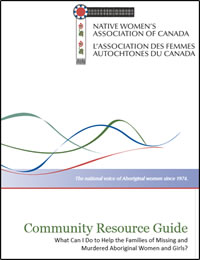 |
|
| Community Resource Guide: What Can I Do to Help the Families of Missing and Murdered Aboriginal Women and Girls?, by the Native Women's Association of Canada (NWAC) | |
This guide contains helpful information for families with missing loved ones, including:
- media relations,
- navigating the missing-person process,
- missing-person posters,
- and navigating victim services
Contents:
- Introduction
- Advocates and Campaigners
- Toolkit: What You Need to Know
- Toolkit: Getting Involved in Your Community
- Toolkit: Organizing Events and Activities
- Toolkit: Sisters In Spirit Vigils—A Movement for Social Change
- Toolkit: Men as Effective Allies
- People Assisting Families
- Toolkit: Unlocking the Mystery of Media Relations
- Toolkit: Navigating the Missing Persons Process
- Template: Missing Persons Poster
- Toolkit: Navigating Victim Services
- Teachers and Educators
- Toolkit: Introducing the Issue of Missing and Murdered
- Aboriginal Women and Girls into the Classroom
- Toolkit: NWAC Suggested Resources for Teachers and Educators
- Toolkit: Safety Measures for Aboriginal Women
- Fact Sheet: Missing and Murdered Aboriginal Women and Girls
- Fact Sheet: Violence Against Aboriginal Women
- Fact Sheet: Root Causes of Violence Against Aboriginal Women and the Impact of Colonization
- Glossary
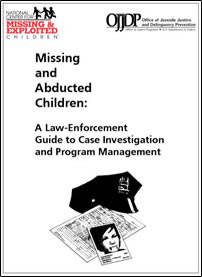 |
|
| Missing and Abducted Children: A Law-Enforcement Guide to Case Investigation and Program Management, edited by Preston Findlay and Robert G. Lowery, Jr. |
This exhaustive guide is for missing-person investigators who need either a quick how-to resource or an in-depth, step-by-step, manual.
It will also help those with a missing loved one ensure their case is being properly investigated.
Contents:
- Acknowledgments
- Letter From Ernie Allen
- Foreword by John Walsh
- An Issue Perspective, by Stephen E Steidel and Preston Findlay
- Quick Reference
- Historical Overview
- The Numbers
- Law Enforcement’s Response to Reports of Missing Children
- Model Policies
- Agency Accreditation
- Significant Trends, Projects, and Programs
- Law-Enforcement Training
- The AMBER AlertTM and Other Missing-Children Notification Programs
- Secondary Distribution of AMBER Alerts
- Alternate Notification Systems
- Child Abduction Response Team
- Protecting Children From Online Victimization
- Developing and Delivering Child-Safety Programs
- Investigation of Family-Abduction Cases by the Prosecutor ’s Office
- Missing-Children Clearinghouses
- Newborn/Infant-Abduction Program
- Identifying and Tracking the Sex Offender
- Extending Resources to Missing Young Adults
- Children Missing From Care Project
- Recovery of Long-Term Missing Children
- Reunification of Missing Children
- National Emergency Child Locator Center
- Obtaining Resource Material
- Conclusion
- References: Citations and Related Resources
- The Initial Response, by Stephen E Steidel, Robert Hoever, and H Wayne Sheppard
- Quick Reference
- Initial-Response Investigative Checklist
- Administrative
- First Responder
- Supervisory Officer
- Investigative Officer
- Initial-Response Components
- Administrative Component
- Call Intake
- Radio Broadcasts
- Nlets
- Fugitive Search Plans
- Special Tipline or Hotline
- Media Relations
- First-Responder Component
- Responding to the Scene
- On-Scene Activities
- Supervisory Component
- Debriefing the First Responder
- Establishing a Command Post
- Mobilizing Investigative Resources
- Implementing Perimeter Patrol
- Maintaining Media Relations
- Supervising the Situation
- Investigative Component
- Debriefing the First Responder(s)
- Interviewing Witnesses
- Developing Assessment Criteria
- Neighborhood Canvassing
- Roadblock Canvassing
- Activating Response Protocols
- Search Component
- Administrative Component
- Conclusion
- References: Citations and Related Resources
- Non-family Abduction, by Charles Masino; Robert G Lowery, Jr; and H Wayne Sheppard
- Quick Reference
- Nonfamily-Abduction Investigative Checklist
- Initial Investigation
- Prolonged Investigation
- Recovery/Case Closure
- Definition of Nonfamily Abduction
- The Initial Response
- Planning
- Tactical Considerations
- Neighborhood Canvass
- Information-Management System
- Use of Polygraph
- Multiple-Suspect Issues: Short- and Long-Term Cases
- Establishing a Command Post
- Hotline
- Family Liaison
- Liaison With Community Groups and Nonprofit Organizations
- Consultation With NCMEC’s Team Adam
- Investigative Considerations
- General
- Regarding Newborn/Infant Abductions
- Statistics
- The Offender
- Use of Violence
- The Response
- Crime-Scene Analysis and Offender Profiles
- The Prolonged Investigation
- Recovery/Case Closure
- Reunification Issues of Nonfamily Abduction
- Guidelines for Handling the Reunification of a Nonfamily-Abducted Child
- Conclusion
- References: Citations and Related Resources
- Family Abduction, by Preston Findlay, Eliza Harrell, and Maureen Heads
- Quick Reference
- Family-Abduction Investigative Checklist
- Initial Response
- Ongoing Investigation
- Prolonged Investigation
- Recovery/Case Closure
- Definition of Family Abduction
- Initial Response
- Risk Assessment
- NCIC Entry
- Use of Media and Clearinghouses
- Violations of Law
- Determining Legal Guardianship or Custody
- Criminal Law Violations
- Family Abduction: Crimes Under State Law
- Family Abduction: Crimes Under Federal Law
- Using Civil-Court Orders
- Ongoing Investigation
- Prolonged Investigation
- International Cases
- Abductions-In-Progress
- Civil Remedies
- Criminal Remedies
- Other Remedies
- Extradition
- Immigration and Nationality Act
- Deportation
- Passport Revocation
- Passport Fraud
- Diplomatic, Mediated, or Voluntary Returns
- Liability, Immunity, and Other Protections
- Liability for Taking Action
- Liability When No Action Is Taken
- Immunity
- Other Protections From Liability
- Prevention
- Recovery and Reunification
- Conclusion
- References: Citations and Related Resources
- The Runaway Child, by Lee Reed
- Quick Reference
- Runaway Investigative Checklist
- The Initial Investigation
- The Prolonged Investigation
- Recovery/Case Closure
- Definition of Runaway Children
- Investigating Cases of Runaway Children
- Role of the First Responder
- Role of the Assigned Investigator
- Family Residence
- Friends
- School/Teachers/School Resource Officers
- Community Agencies/Organizations
- Assessing Cases of Runaway Children
- Risk Factors
- Runaways and the Internet
- Runaways and the Commercial Sexual Exploitation of Children
- Prolonged Investigation
- Recovery and Case Closure
- Procedural Steps
- Disclosure of Exploitation or Abuse
- Returning Runaways From Distant Locations
- Reunification Issues of Runaway Children
- Guidelines for Handling the Reunification of a
- Runaway Child
- Evaluation of Agency Policies Regarding Runaway Children
- Proactive Programs
- Conclusion
- References: Citations and Related Resources
- Agency Self-Assessment: Cases of Runaway Children
- Searches for Critically Missing Children, by Robert G Lowery, Jr; Henry, Schmidt; Lee Manning; and Ron Olive
- Quick Reference
- Planning Prior to An Incident
- Initial Response
- Planning the Search
- Lost-Person Behavior
- Probable Distances of Travel
- Typical Behavior of Children Aged to
- Typical Behavior of Children Aged to
- Health Challenges
- Preparing for the Search: Additional Considerations
- Searches
- Search Tactics: The Basics
- Type I: Hasty Search
- Type II: Systematic Search
- Type III: Thorough Search
- Other Search Considerations
- When a Landfill Search Is Considered
- Documentation
- References: Citations and Related Resources
- Investigative Resources, by Stephen E Steidel and Thomas G Sirkel Jr
- Quick Reference
- Resource Agencies and Organizations
- National Center for Missing & Exploited Children®
- Missing Children Division
- Case Analysis Division
- Family Advocacy Division
- Exploited Children Division
- NCMEC Investigative Publications
- NCMEC’s Commitment to Law Enforcement
- National Crime Information Center
- Missing Person File
- Unidentified Person File
- Offline Search
- Federal Agency Task Force for Missing and Exploited Children
- Additional Federal Resources
- Missing-Children Clearinghouses
- Nonprofit, Missing-Children Organizations
- National Association for Search & Rescue
- Local, State, and Regional Resources
- Pre-incident Planning
- References: Citations and Related Resources
- Crisis Media Relations, by Hugh Munn
- Quick Reference
- The Law Enforcement-Media Relationship
- Legal Review
- At the Scene
- Access to Records
- Perceptions
- Crisis Forecasting
- Emergence of the “New” News Reporter
- Managing High-Profile Cases
- Recommendations and Suggestions
- References: Citations and Related Resources
- Management Issues, by Thomas B Smith and H Wayne Sheppard
- Quick Reference
- Define and Evaluate Current Operational Procedures
- Develop New Operational Policies and Procedures
- Identify New Objectives and Goals
- Consider Establishing a Dedicated Missing-Child Unit
- Evaluate Implementation Issues
- Program Implementation
- Children Missing From Care: Special Management Considerations
- Conclusion
- References: Citations and Related Resources
- Agency Self-Assessment: Missing-Children Preparedness
- Agency Self-Assessment: Children Missing From Care
- Use of Volunteers in Missing-Child Units
- Volunteer Assigned to Missing-Child Unit: Sample Job-Description Statement
- Appendices
- Quick Reference
- Appendix A: NCIC Missing-Person-File Categories
- Appendix B: NCIC Child-Abduction Flag
- Appendix C: Victim/Family Data-Collection Questionnaire
- Index
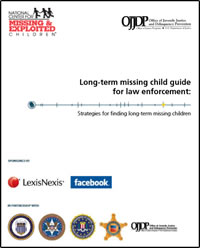 |
|
| Long-Term Missing Child Guide for Law Enforcement: Strategies for finding long-term missing children, edited by Robert G. Lowery, Jr., and Robert Hoever | |
This exhaustive guide is for missing-person investigators who are working on long-term-missing cases.
It will also help those with a missing loved one ensure their case is being properly investigated.
Contents:
- Acknowledgments
- Letter from John Walsh
- Foreword by Patty Wetterling
- Introduction by Robert G Lowery, Jr
- Quick reference
- We are finding more long-term missing children now
- Are we doing enough?
- Overview of missing children cases, by Robert G Lowery, Jr; John Bischoff; and Robert Hoever
- Quick reference
- Defining long term
- Missing child classifications
- Definitions used by NCMEC
- Runaway children
- Risk assessment
- Social media and text messaging: Aids to assist in assessing risk
- Child sex trafficking and children missing from care
- Child homicides
- Initial missing child classifications
- Child homicide prosecutions without a body
- Investigative practices, policies and principles, by Robert G Lowery, Jr; Robert Hoever; and Richard Leonard
- Quick reference
- Local CARTs, FBI’s CARD, FBI’s BAU (3) and additional resources
- Management challenges
- Keeping the investigation active
- Transition of the investigative team
- Assumption: Everything that can be done on the case has been done
- Going back to the beginning
- Documentation: Case reports and related materials
- Legacy information: Thoughts about recreating lost, misplaced or destroyed case files
- Verifying information from sources such as cyber sleuths, bloggers and questionable witnesses
- Investigative methodology
- Victimology
- Friends and associates of the victim
- Timelines: Determining the window of opportunity
- Suspect and witness statements
- The effect of trauma on bystanders and witnesses
- Suspect development and elimination
- Linkage analysis
- Identifying the crime scene
- Neighborhood canvassing
- Social media as an investigative tool
- Composites
- Age progression images of long-term missing children
- Comprehensive case review
- Inspiration and innovation in missing children investigations
- Back to basics
- Review
- Reconsider
- Reconnect
- The use of rewards
- Holdback information
- Additional case examples
- Technology
- National Center for Missing & Exploited Children
- National Crime Information Center
- National Missing and Unidentified Persons System
- National Institute of Justice
- Violent Criminal Apprehension Program
- Nlets
- Regional Information Sharing System
- Data management
- Hard copy files
- Document preparation
- Reconstruction of older documents
- Evidence review, by Patty Aagaard
- Quick reference
- Introduction
- Why do the review?
- Revisiting the crime scene
- Issues/challenges with evidence review
- Requirements for conducting the review
- Forensic databases
- Familial searching
- Conclusion
- Additional references
- Child abductions involving long-term confinement, by Mark Hilts, Kristen Slater and Jennifer Eakin
- Quick reference
- Introduction
- Offender considerations
- Traumatic bonding considerations
- Investigative considerations
- Media considerations
- Messaging
- The victim
- The public
- The offender’s inner circle
- The offender
- After the recovery
- Conclusion
- Search considerations, by Ray Harp; H Wayne Sheppard; and Robert G Lowery, Jr
- Quick reference
- Case review checklist for search specialist in response to missing children
- Conduct a thorough review of all aspects of the investigation
- Review of case information
- Review of the victimology information
- Review of details surrounding the missing episode
- Review of suspect information
- Review of witness information
- Relationship to the incident
- Strategies for renewed or additional search
- Search plan development
- Special search environments
- Landfill search
- Making the decision to carry out a landfill search
- Who is responsible for the cost of a landfill search?
- Water searches
- Canine-assisted searches
- Concluding or suspending a search
- Family considerations
- Final considerations
- The identification of unknown children, by Angela Williamson and Robert G Lowery, Jr
- Quick reference
- Introduction
- Missing children and identifying unidentified children
- NCIC and NamUs
- Best-practice recommendations
- Victimology: How to obtain and ensure the most accurate data about unidentified children
- Forensic imaging
- Biometrics
- Fingerprints
- Electronic submissions
- Manual submissions
- Latent prints
- Medical information
- Investigative considerations
- Unidentified living individuals
- Emerging technologies for medical examiners, coroners and law enforcement
- Media strategy
- Resources
- Sample unidentified child data form
- Sample unidentified case file checklist
- Unidentified child investigation recommendations
- National Center for Missing & Exploited Children’s Forensic Services Unit
- Family dynamics and survivor recovery: Understanding the relationships, by Robert G, Lowery, Jr; Duane Bowers; Robert Hoever; and Angeline Hartmann
- Quick reference
- Relationship with families: Overcoming the obstacles
- The basics
- As leads diminish
- Role of the law enforcement family liaison
- Factors to consider in the family liaison role
- Responsibilities of the family liaison
- Assisting families with the media
- Embracing social media to help with the search
- Social media considerations
- Using Facebook to raise awareness
- Law enforcement considerations when working with families
- Press conferences
- Remember: The family is in charge of the media event they create
- Related guidance for investigators:
- Overcoming challenges when family members are suspects
- Supporting families during identification
- Language and terminology
- Law enforcement and incident’s impact on the community
- Missing child reunification
- Setting the stage for a positive reunification
- Challenges when sexual exploitation is involved
- Reintegration: Moving forward
- In closing
- Appendix: Summit participants
 |
|
| When Your Child Is Missing: A Family Survival Guide, by the Office of Juvenile Justice and Delinquency Prevention (OJJDP) | |
This guide is for families dealing with a missing loved one.
Contents:
- Message From Attorney General Eric H Holder, Jr
- Message From Assistant Attorney General Laurie O Robinson
- Foreword
- Acknowledgments
- Introduction
- Checklist: What You Should Do When Your Child Is First Missing
- The AMBER Alert Plan
- The Search
- Your Role in the Search: The First Hours
- The Role of Law Enforcement in the Search
- The Role of Volunteers in the Search
- After the First Hours: The Long-Term Search
- The Role of Private Detectives and Psychics in the Long-Term Search
- Key Points
- Checklist: Gathering Evidence in the First Hours
- Law Enforcement
- Your Partnership With Law Enforcement
- Key Points
- Checklist: Working With Law Enforcement
- The Media
- Media Involvement: The First Hours
- Media Involvement: After the First Hours
- Key Points
- Checklist: Conducting Interviews With the Media
- Photo and Flier Distribution
- Photo and Flier Distribution: The First Hours
- Photo and Flier Distribution: After the First Hours
- Key Points
- Checklist: Distributing Fliers
- Volunteers
- Making the Best Use of Volunteers
- Using Untrained Volunteers in the Search Effort
- Using Trained Volunteers in the Search Effort
- Key Points
- Checklist: Working With Volunteer Searchers
- Rewards and Donations
- Monetary Rewards
- Monetary Donations
- Key Points
- Checklist: Selecting a Tipline for Leads
- Personal and Family Considerations
- Regaining Your Emotional and Physical Strength
- Mentally Preparing for the Long Term
- Helping Your Other Children To Regain Their Physical and Emotional Strength
- Helping Extended Family Members To Regain Their Physical and
- Emotional Strength
- Key Points
- Checklist: Figuring Out How To Pay Your Bills
- Recommended Readings and Other Resources
- Additional Resources
- About the Parent Authors
- Index
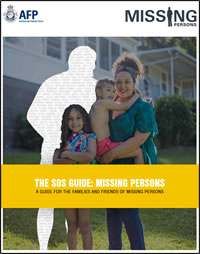 |
|
| The SOS Guide: Missing Persons — A Guide for the Families and Friends of Missing Persons, by the National Missing Persons Coordination Centre (NMPCC) | |
This guide provides general guidance on how to navigate legal and practical matters during the disappearance of a family member or friend.
Contents:
- The Investigation
- Filing a report
- Keep records
- The Police Investigation
- Beyond three months
- National Missing Persons Coordination Centre
- Australians Missing Overseas
- Department of Foreign Affairs and Trade
- Yellow notice
- Search
- Helping with the search
- Posters
- Spread the word
- Tracing services
- Other Options
- Rewards
- Community awareness & events
- Age progression
- Media
- Using the media
- What will the media ask?
- Social media & missing persons
- Practical Matters
- Personal property
- Informing the necessary people
- Privacy matters
- Financial & estate management
- Mobile phone accounts
- Coronial Process
- What is a coronial inquest?
- The coronial process
- DNA & Forensic Collection
- The National Missing Persons and Victim System
- Deoxyribonucleic acid (DNA)
- Dental records
- Fingerprints
- Support
- Personal health & wellbeing
- Writing & remembrance
- Support services
- Contacts
- Law enforcement
- Government agencies
- Family advocacy networks
- Search agencies
- Support agencies
- My Contacts
- Notes
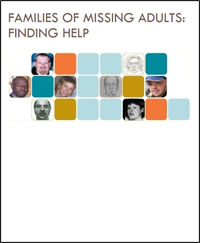 |
|
| Families of Missing Adults: Finding Help, by Ontario's Missing Adults (OMA) | |
This guide is designed to provide information to families of long-term missing adults, including:
- filing a missing person report with police,
- helping in the search for a missing person,
- and finding support services for family members.
Contents:
- Introduction
- Missing Adults
- Reasons why adults go missing
- Contacting Police
- The Family Representative
- Filing a Missing Person Report
- Other Issues to Discuss with Police
- Contact with Police over the Course of the Investigation
- Documenting Your Activities
- Reaching Out For Help In Locating Your Loved One
- Increasing Awareness through the Media
- Preparing to Engage the Media
- Speak with Police First
- Preparation of Information
- Contacting Traditional Media
- Additional Considerations
- Once an Interview is Granted
- Following the Interview
- Creating Posters
- Using the Internet and Social Media to Increase Awareness
- Using the Internet and Social Media for Conducting Searches
- Agencies Providing Search Services
- Red Cross – Restoring Family Links
- Salvation Army – Family Tracing Service
- Support For Yourself And Your Family
- Protecting Your Privacy
- Protecting Your Emotional Well-Being Online
- Developing A Support Network
- Online Support Groups
- Taking Care of Yourself
- Additional Resources
- Mental Health Service Information Ontario
- Canadian Mental Health Association
- Missing Adults And The Criminal Justice System
- Are Missing Adults Victims of Crime?
- Why is this important?
- Organizations Working with Victims of Crime
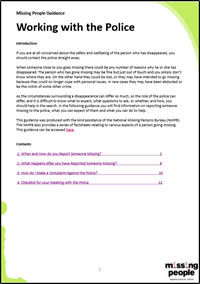 |
|
| Working With the Police, by Missing People (MP) | |
This is a guide for families dealing with a missing loved one.
Contents:
- When and How do you Report Someone Missing?
- What Happens After you have Reported Someone Missing?
- How do I Make a Complaint Against the Police?
- Checklist for your Meeting with the Police
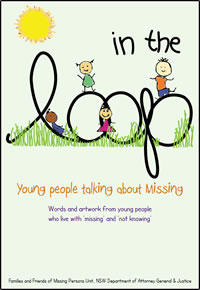 |
|
| In the Loop: Young People Talking About Missing, by Families and Friends of Missing Persons Unit, Victims Services, New South Wales Department of Justice, Australia | |
This resource gives a voice to children and young people affected by a missing loved one.
It reflects their thoughts and experiences. Having someone close to them missing can be overwhelming, confusing, frightening and lonely for anyone, including young people.
Young people have said they want to be included and informed following the report to police of a missing family member. They want to be kept “in the loop”.
Contents:
- Foreword
- Intro
- Working with young children
- What is 'Missing?
- How it feels
- Please don't say things like
- What I want from others
- What helps me
- Young people and the right to be included
- Reminders
- Lucy's story
- Information for young people and adults
- Acknowledgements
- References
 |
|
| Missing: A Guide for Families and Friends of Individuals with a Mental Illness Who Have Gone Missing, by Christine Lafond, Stephanie Scherbain & Gita Sud, Mental Health Education Resource Centre of Manitoba | |
This guide was developed to help families and friends who are searching for a person with a mental illness or mental health condition who has gone missing.
It is a step-by-step resource designed to help families and friends understand their options and take concrete steps to help find their loved one.
Contents:
- What can I do immediately?
- When do I call the police?
- Broadening the Search
- Working with the Media
- Making a Missing Person Poster
- Where can I distribute posters?
- Sample Poster for Missing Person
- Weeks 2 and 3 — What can I do?
- Taking Care of Yourself
- When your loved one is found
- Suicide risks and prevention
- Frequently Asked Questions
- What can the police do?
- What is outside the police’s role?
- What numbers should I call to report a missing person?
- How long should I wait before I report a missing person?
- Do the police have a specialized department within their missing person’s division focusing on those with a mental illness?
- What is risk assessment?
- What should I do if I believe the missing person is a danger to themselves and/or a danger to others?
- What should I tell the police?
- Sample Missing Person’s Police Report
- What is the Vulnerable Persons Living with a Mental Disability Act?
- Who is considered to be a vulnerable person?
- What is a substitute decision maker?
- How does the Vulnerable Persons Act impact the search for the missing person?
- How does the Personal Health Information Act (PHIA) impact the process of finding a missing person?
- What is a public trustee?
- What is a committee or substitute decision maker and how can someone become one?
- How can the doctor or service provider help?
- Sample questions to ask the doctor
- Will the hospital notify the police of an admitted missing person?
- Suggestions for reducing stigma often associated with individuals who have a mental illness
- How can I prepare myself in case my loved one goes missing again
- Contacts and Agencies
- Personal contacts and numbers
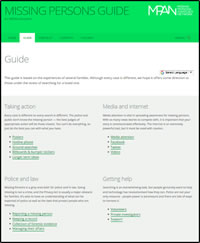 |
|
| Missing Persons Guide, by the Missing Persons Advocacy Network (MPAN) | |
This is an online guide for families dealing with a missing loved one.
Contents:
- Taking action
- Posters
- Hotline phone
- Ground searches
- Billboards & bumper stickers
- Longer term ideas
- Police and law
- Reporting a missing person
- Keeping a record
- Collection of forensic evidence
- Managing their affairs
- Media and internet
- Media attention
- Videos
- Getting help
- Volunteers
- Private investigators
- Support
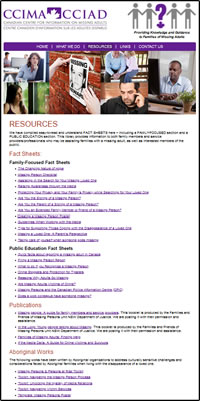 |
|
| Resources, by the Canadian Centre for Information on Missing Adults (CCIMA). | |
This is an online resource list for families with a missing loved one.
Contents:
Family-Focused Fact Sheets
- The Changing Nature of Hope
- Missing Person Checklist
- Assisting in the Search for Your Missing Loved One
- Raising Awareness through the Media
- Protecting Your Privacy and Your Family’s Privacy while Searching for Your Loved One
- Are You the Sibling of a Missing Person?
- Are You the Parent of a Sibling of a Missing Person?
- Are You an Extended Family Member or Friend of a Missing Person?
- Creating a Missing Person Poster
- Guidelines When Working with the Media
- Tips for Supporting Those Coping with the Disappearance of a Loved One
- Missing a Loved One: A Parent’s Perspective
- Taking care of yourself when someone goes missing
Public Education Fact Sheets
- Quick facts about reporting a missing adult in Canada
- Filing a Missing Person Report
- What to do if you Recognize a Missing Person
- Crime Stoppers and Protection for Tipsters
- Reasons Why Adults Go Missing
- Are Missing Adults Victims of Crime?
- Missing Persons and the Canadian Police Information Centre (CPIC)
- Does a work colleague have someone missing?
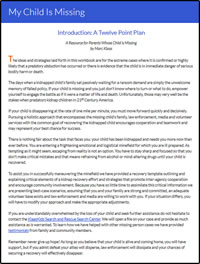 |
|
| Introduction: A Twelve Point Plan — A Resource for Parents Whose Child is Missing, by Marc Klaas | |
This is an online workbook of ideas and strategies laid forth for the extreme cases where it is confirmed or highly likely that a predatory abduction has occurred or there is evidence that the child is in immediate danger of serious bodily harm or death.
The days when a kidnapped child’s family sat passively waiting for a ransom demand are simply the unwelcome memory of failed policy.
If your child is missing and you just don’t know where to turn or what to do, empower yourself to engage the battle as if it were a matter of life and death. Unfortunately, those may very well be the stakes when predators kidnap children in 21st Century America.
Contents:
- Introduction
- What To Do If Your Child Disappears
- Missing Child Statistics
- Law Enforcement Relations
- Be Preopared
- Media Relations
- Maximizing Opportunities
- Volunteer Resources
- Civic Organizations
- Volunteer Center Organization
- Mission
- Leadership
- Volunteer Center
- Critical Relationships
- Critical Personnel
- The Search
- Klaaskids National Search Center for Missing Children
- Manager Bio
- Testimonial
- Hazards
- Psychic Detectives
- Commercial Exploitation
- Helpful Hints & Strategic Options
- Rewards
- Press Releases & Press Conferences
- City Council Wish List
- Ten Day Plan
- Six Week Plan
- Missing Children Services
- Private Investigators
- Child Locator NPO’s
- State Missing Children Clearinghouses
- Public Record Finder
- Conclusion
- Other Resources
- “Missing: What To Do If Your Child Disappears…”
- Beyond Missing
| << Prior Chapter | Next Chapter >> |
People who say it cannot be done,
should not interrupt those who are doing it.
— Author unknown
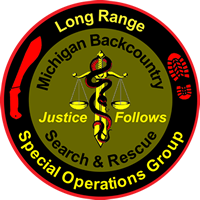
If you've been able to read this
Web page...
thank a Teacher;
If you've been able to read this
Web page in English...
thank a Veteran.
— Author unknown
Copyright © 1984-
March 23, 2021
by Michael A. Neiger
Contact Michael Neiger via e-mail at mneiger@hotmail.com
Top
You're here: MibSAR :: M-P Sourcebook Table of Contents :: Books